Introduction:
Fin drains are narrow trenches that may be thought of as 'high-tech' land drains . They utilise a 'geo-grid' sandwiched between layers of 'membrane' or ' geo-textile ' which act to direct any groundwater and/or surface water directly into a traditional piped drainage system.
Fin drains have been revolutionised over the past 25 years or so by the development of drainage composites, ie, sheet materials which use two membranes separated by a 'core' or 'geo-grid'. The basic idea is that the core acts as a water channel while the membranes prevent ingress of soil and clay particles. They are intended to reduce/eliminate the need for a granular backfill material and thereby reduce both construction time and costs.
Different types of drainage composites have different membranes; some have permeable membranes to both faces, and others have one permeable and one impermeable face. The geo-grid core comes in a range of different thicknesses to cope with various flow regimes, and some composites are designed to control different fluids, such as landfill gas (methane). The intended use will determine which is the most suitable type of composite to be used, and so it is imperative that a professional engineer or the relevant manufacturers are consulted before specifying any particular option.
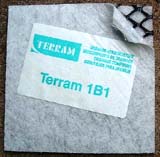
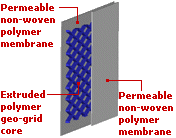

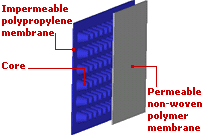
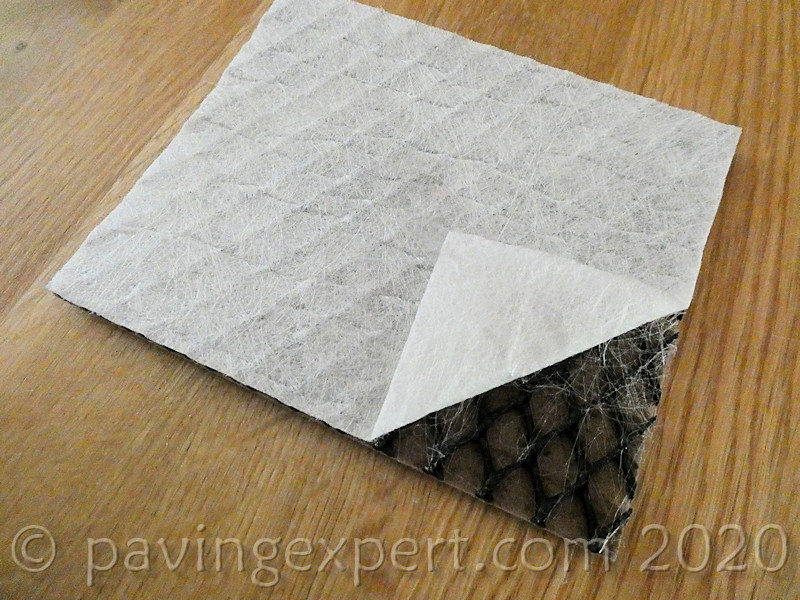
Grid core separates two permeable membranes

Cuspated impermeable backboard is lined with permeable membrane
Drainage composites are increasingly used to protect and/or drain underground structures and also have uses in gas ventilation and landfill containment, but that is a highly specialised field of civil engineering and beyond the remit of this site for the time being. Fin drains are now commonly specified to provide drainage at a pavement edges to ensure that the sub-base and capping layers of a carriageway are not adversely affected by high groundwater levels.
Construction
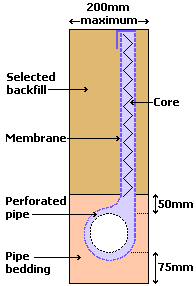
The typical construction of the two most common types of fin drain are shown opposite. One type features a perforated pipe collecting from a composite that envelops the pipe, and the second type utilises a non-perforated pipe that is directly fed by the composite material. The ground conditions of the site will determine which type of fin drain is best suited to the project.
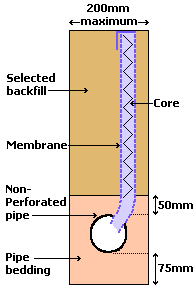
Typical uses
Some typical uses of fin drains and drainage composites are shown below. More and more uses are being found for the highly versatile drainage composites, from using them beneath roof gardens to protecting tunnel structures and bridgeworks. Although they are currently used primarily in the civil engineering sector, it can only be a matter of time before we start to see these materials being used on residential and landscaping projects.
Vertical edge drains constructed alongside pavements and carriageways ensure that hydrostatic pressure is not allowed to develop within the structural layers which is a major cause of pavement failure. They are claimed to be quicker and easier to install, and more cost-effective, than traditional filter drains.

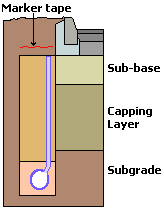
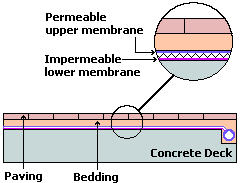
The range of drainage composites now available offer solutions to almost every conceivable groundwater management problem. Different core thicknesses allow even the heaviest groundwater flow regime to be effectively controlled, and thereby open up many new design possibilities.
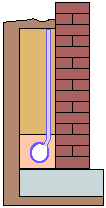
Many thanks to Terram for their invaluable assistance in preparing this page.
SUDS Pages
